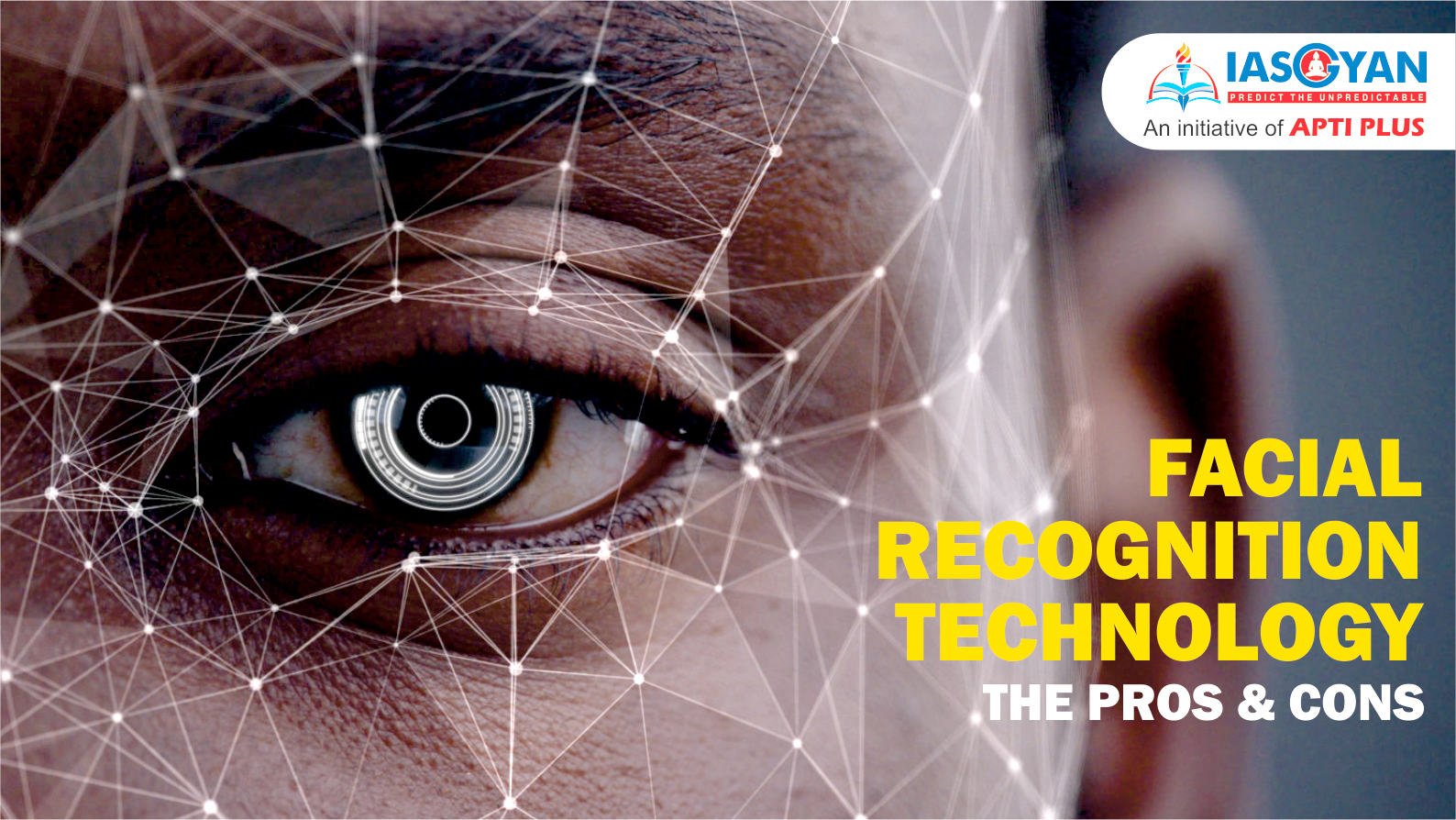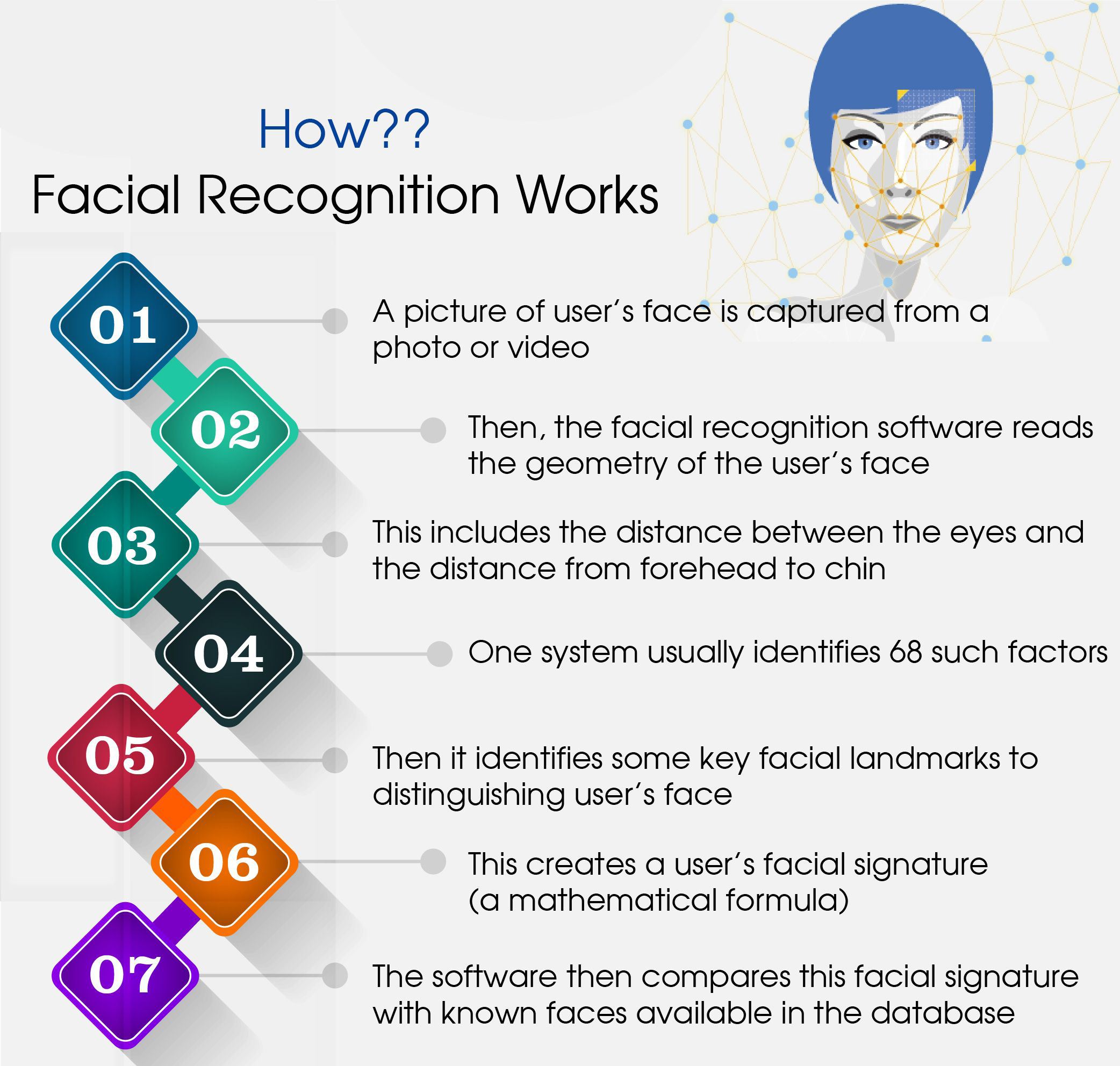Free Courses Sale ends Soon, Get It Now


Free Courses Sale ends Soon, Get It Now



Facial recognition is a biometric technology that uses distinguishable facial features to identify a person.
Facial recognition technology has received significant attention as it has the potential for a wide range of application related to law enforcement as well as other enterprises.
Whether it's a surveillance camera in grocery stores, tagging friends in social media, or logging into our smart-phones, facial recognition is here to stay. Plus, it's prime to see even more frequent use as time goes on.

But like all technology, there are benefits and drawbacks to using facial recognition too.
So, let’s take a look at the good, the bad and the interesting of facial recognition.
Enhanced security
With the 3D biometric system and infrared cameras, facial recognition can perform more efficiently. A company’s premises can be secured by monitoring employees and visitors.
With the help of facial recognition, it will be easier to track down any burglars, thieves, or other trespassers.
On the governmental level, facial recognition can help identify terrorists or any other criminals with the help of the face scan only. The additional bonus is the fact that one cannot hack the technology: there is nothing to steal or change, like in case of a password, for example.
As for personal use, facial recognition can be used as a security tool for locking personal devices and for personal surveillance cameras.
Faster processing
The process of recognizing a face takes a second or less — and this is incredibly beneficial for the companies.
In the era of constant cyber attacks and advanced hacking tools, companies need a technology that would be both secure and fast. Considering that facial recognition is almost instant, it grants a quick and efficient verification of a person. In addition, it’s hard to fool this technology so this is another bonus.
Automation of identification
Before, security guards had to perform manual identification of a person that took too much time and did not have high accuracy. But today, facial recognition is completely independent in the identification process and not only takes seconds but is also incredibly accurate.
The 3D facial recognition technology and the use of infrared cameras significantly boosted the level of accuracy of facial recognition and made it really hard to fool.
Seamless integration
The facial recognition technology is quite easily integrated. It does not require spending additional money on its integration and most facial recognition solutions are compatible with the majority of security software. A 100% win-win.
Reduces the number of touch-points
Facial recognition requires fewer human resources than other types of security measures, such as fingerprinting. It also doesn’t require physical contact or direct human interaction. Instead, it uses AI to make it an automatic and seamless process.
It also limits touch-points when unlocking doors and smart-phones, getting cash from the ATM or performing any other task that generally requires a PIN, password or key.
Less germs
Facial recognition is no contact, meaning travelers won’t have to whip out their hand sanitizer at every other airport station requiring them to prove their identity.
Helps find missing people
Law enforcement agencies use facial recognition to find missing people, and they've also used it to find missing children.
When combined with aging software that shows how the child would look several years later, facial recognition can even help find someone who’s been missing for years.
Improves medical treatment
One surprising use of facial recognition technology is the detection of genetic disorders.
By examining subtle facial traits, facial recognition software can, in some cases, determine how specific genetic mutations caused a particular syndrome. The technology may be faster and less expensive than traditional genetic testing.
Data Storage
In today’s world of data, data storage is gold since there is so much data in the world. Whether it may be a very high quality movie or 100,000 faces to store, everything requires space. This means that in order for facial recognition systems to be efficient, they only process about 10-25% of videos. To combat this, many companies use many computers to process everything and to cut the time it takes to do so. However; until technology significantly develops, this obstacle is here to stay.
Vulnerability in recognition
Facial recognition technology is indeed very accurate and no one can doubt that.
At the same time, a slight change in the camera angle or even the change of appearance will inevitably lead to an error.
The camera angle has a very strong influence on whether or a not a face is processed. In order for a facial recognition system to completely identify a face, it needs multiple angles, including profile, frontal, 45 degree and more, to ensure the most accurate definitely cause some trouble.
Threatens individual and societal privacy
With the help of this technology, the government can track down the criminals. But at the same time, it can actually track down people anytime, anywhere.
The threat to individual privacy is a significant downside of facial recognition technology. People don’t like having their faces recorded and stored in a database for unknown future use.
Privacy is such a big issue that some cities, including San Francisco, California and Cambridge, Massachusetts, have banned law enforcement’s use of real-time facial recognition surveillance. In these cases, police can use video recordings from personally owned security video devices, but they can’t use live facial recognition software.
Lack of regulations in the AI in Face recognition systems
Government across the whole world doesn’t have a particular policy or regulations to regulate the usage of touch less biometric attendance system. Some cities and places in the world have already banned this system considering the amount of threat it can cause to the people. While there are some places in the world where usage of face recognition based attendance system is already under progress but without any regulation. Which means lakhs of people’s data is already under threat.
Implementation comes at a cost
The technology comes at a cost. Facial recognition software is extremely advanced and requires top-of-the-line cameras to guarantee accuracy and speed.
Still a work in progress
While facial recognition software is super high tech, it isn’t perfect. AI still isn’t fully effective at identifying race or gender. These programs also struggle to track change in appearance such as a fluctuation in weight, a new hair style and even facial hair.
Violates Right to Freedom
Countries with limited personal freedoms, such as China, UAE, North Korea, Iran and Iraq, commonly use facial recognition to spy on citizens and arrest those deemed troublemakers.
Creates data vulnerabilities
There is also concern about the storage of facial recognition data, as these databases have the potential to be breached.
Hackers have broken into databases containing facial scans collected and used by banks, police departments and defense firms in the past.
Provides opportunities for fraud and other crimes
Lawbreakers can use facial recognition technology to perpetrate crimes against innocent victims too. They can collect individuals’ personal information, including imagery and video collected from facial scans and stored in databases, to commit identity fraud.
With this information, a thief could take out credit cards and other debt or open bank accounts in the victim’s name, or even build a criminal record using the victim’s identity.
Beyond fraud, bad actors can harass or stalk victims using facial recognition technology.
For example, stalkers could perform reverse image searches on a picture taken in a public place to gather information about their victims and determine who they are and where they live.
Plus, because technological crime moves faster than the law, people can be victimized before the activity is viewed as a crime.
All facial recognition technology emerges into the market with both promises and challenges. It is possible that in just a few years, such systems will be so advanced so as to process expressions and hand gestures within a matter of seconds. While the pros will advance, most of the cons can be reduced by human tweaking.
© 2024 iasgyan. All right reserved